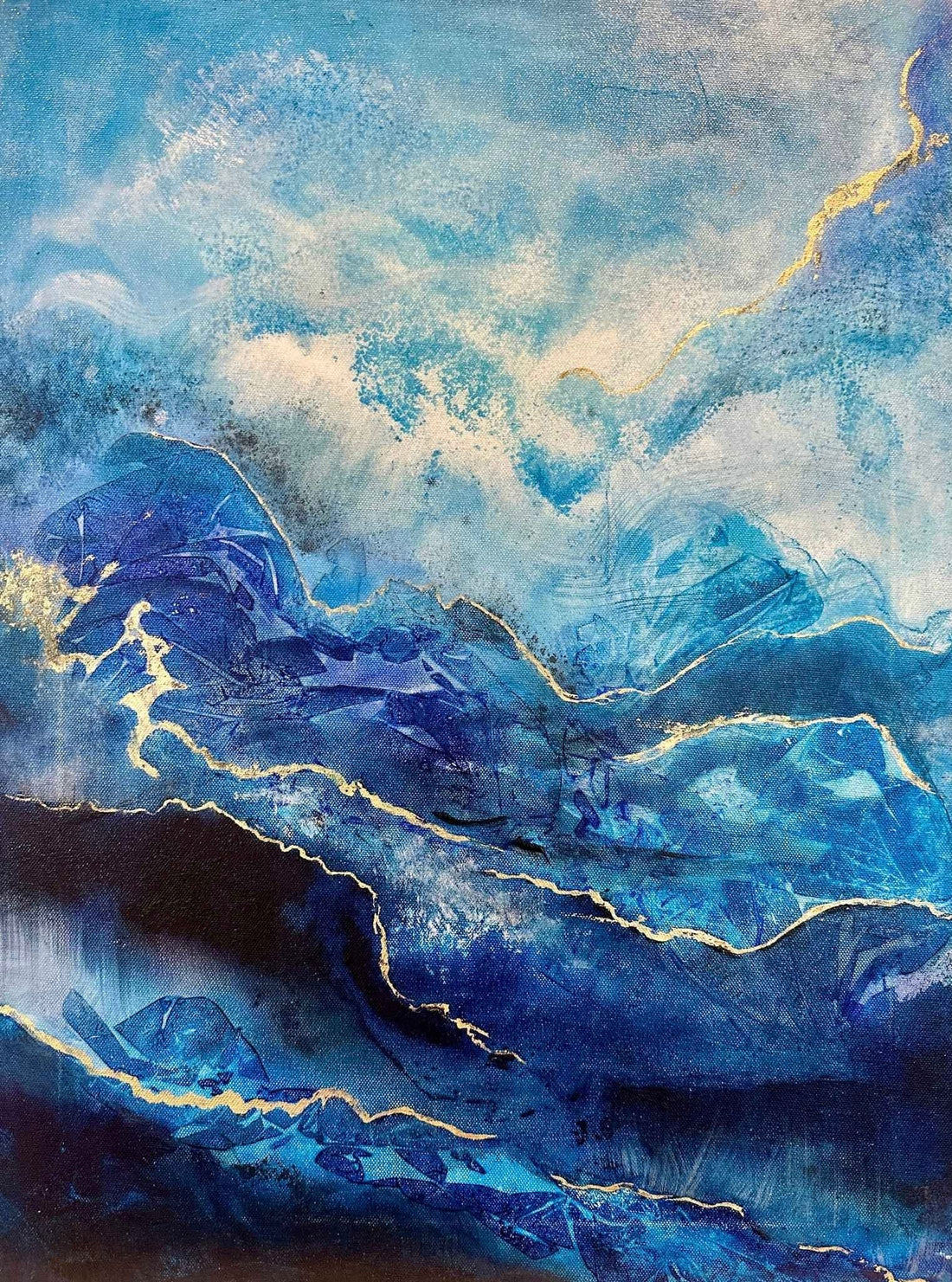
The Art of Kintsugi: Finding Beauty in Life’s Cracks and Imperfections
Share
The Art of Kintsugi: Finding Beauty in Life’s Cracks and Imperfections
As an artist, the journey of creation is often about pushing boundaries and venturing into the unknown. We set out with grand visions, seeking to explore, discover, and express our truths. But what if the path of art—and life itself—wasn’t just about flawless perfection and pristine outcomes? What if the cracks, the breaks, and the moments of falling apart held just as much beauty and meaning as the flawless surfaces we often chase?
This is where the ancient Japanese art of Kintsugi enters the picture.
Kintsugi is the art of mending broken pottery with lacquer dusted or mixed with gold, silver, or platinum. It's not merely a repair technique; it’s an expression of resilience, beauty, and transformation. The cracked pottery, rather than being discarded or hidden, is celebrated. The breaks are not seen as flaws but as marks of history, stories of survival, and proof of strength. Kintsugi offers us a profound lesson that echoes not only through the world of art but through our own lives.
The Beauty of Imperfection
In Kintsugi, cracks and scars are not something to be ashamed of. Instead, they are embraced, highlighted, and integrated into the piece’s new identity. The pottery, once broken, is transformed into something even more beautiful and unique than it was before.
This philosophy of honoring imperfections aligns closely with the mindset of the Explorer, which is characterized by curiosity, self-discovery, and a willingness to embark on transformative journeys. The explorer is not afraid of uncertainty or the rough terrain of life; they seek to navigate through challenges, learning and growing along the way. And just as an explorer’s path is often unpredictable, so too is the journey of art and life—full of twists, turns, and sometimes, unexpected breaks.
In our own lives, we are constantly in flux, evolving, sometimes falling, and even breaking. But those breaks don’t define us; it’s how we heal, how we rise from the cracks, that shapes who we become. As artists, we too experience moments of vulnerability, failure, and imperfection. But instead of seeing those moments as setbacks, they can be seen as the raw materials from which we craft something even more beautiful. Just as Kintsugi highlights the cracks of a piece, our own scars—physical, emotional, or creative—can tell the most profound stories of who we are and what we’ve endured.
The Power of Transformation
What makes Kintsugi so powerful is its emphasis on transformation. It teaches us that we are not defined by our moments of breaking, but rather by how we choose to rebuild ourselves. This transformation is a journey—one that doesn’t happen overnight, and one that requires patience and an open heart.
In the world of art, every failure, every attempt that doesn’t go according to plan, becomes part of the exploration. It’s part of the process. Even the most celebrated works of art have been shaped by struggle, by mistakes, and by imperfections. The artist’s ability to learn from these challenges, to repair and adapt, is what leads to breakthroughs. Just as in Kintsugi, where the act of mending becomes an act of creation, we too find ways to evolve from our difficulties and make something new and even more beautiful from what once seemed broken.
Seeing Life Through a Different Lens
As an artist, your work is not only a reflection of your inner world but also a mirror to the world around you. When we approach life and art through the lens of Kintsugi, we learn to see beauty in places we once overlooked. We learn to appreciate the cracks—the moments that didn’t go as planned, the difficult periods of growth, and the unexpected turns. Each imperfection adds to the narrative of who we are, and much like Kintsugi pottery, we become more valuable for the stories we carry within us.
Imagine your own life as a work of art. What would it look like if you embraced the parts that feel broken or unfinished? What would it feel like to take your scars and turn them into gold? Would you see them as markers of your journey rather than evidence of your failures?
In our pursuit of perfection, we often forget that the most precious moments come from the spaces where we dare to be imperfect. Every crack in the pottery, every unfinished brushstroke, and every unexpected turn in your artistic journey represents not a flaw, but an opportunity for transformation, for growth, and for discovery.
Exploring Beyond Perfection
As we continue our artistic journeys, let Kintsugi remind us that exploration is about the adventure, not the destination. It’s about being present with the process, welcoming the unexpected, and embracing the beauty in the journey, no matter how fractured or incomplete it may seem at times.
The cracks in your art—just like in life—hold stories. Stories of resilience, growth, and the moments you didn’t expect but that shaped you into who you are today. So as you set out on your next creative adventure, remember: the cracks are where the gold lies.
Kintsugi is more than an art form—it’s a philosophy for living and creating. It teaches us to find beauty in the brokenness, to cherish the cracks as part of the journey, and to never fear the mending. As an artist, as an explorer, embrace your imperfections. They are your greatest treasures.
